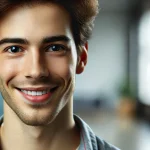Barriers to cross-cultural communication can arise from differences in language, nonverbal communication, cultural values, attitudes, and beliefs. These barriers can lead to misunderstandings, confusion, and even conflict, which can ultimately harm relationships and hinder the achievement of common goals. Therefore, it is important to be aware of these barriers and develop strategies to overcome them. By doing so, individuals and organizations can build strong relationships, foster mutual understanding, and achieve success in cross-cultural interactions.

Each culture has its norms, values, beliefs, and communication styles, which can affect how messages are received and interpreted. Therefore, it is crucial to understand and adapt to these cultural differences in Communication to interact with people from different cultures effectively. Effective cross-cultural Communication involves active listening, empathy, and respect for different communication styles and cultural backgrounds.
Contents
What are some cross-cultural issues in the workplace?
Cross-cultural issues in the workplace can arise due to differences in communication styles, work expectations, and values. One common challenge is language barriers, where employees from different cultural backgrounds may struggle to communicate effectively. This can lead to miscommunication, misunderstandings, and even conflicts within the team. To address this issue, organizations can implement language training programs or provide support through interpreters or translators.
Another Cross-Cultural issue is differing work expectations. In some cultures, employees may prioritize teamwork and collaboration while others may value individual achievement more. These varying perceptions of success can create tension within a multinational team and hinder productivity. To overcome this challenge, organizations must foster an inclusive and supportive work environment that encourages open dialogue about expectations and promotes respect for different approaches to work.
Furthermore, varying values and customs across cultures can also impact workplace dynamics. For example, in some cultures hierarchy plays a significant role in decision-making processes while others focus on consensus-building.
These contrasting perspectives can result in conflicts when working together on projects or making decisions as a team. To bridge these gaps, organizations need to promote cultural sensitivity training among employees to enhance their understanding of different cultural practices and encourage mutual respect.
Overall, cross-cultural issues present both challenges and opportunities for organizations aiming to build diverse teams that thrive on collaboration and innovation.

Why is Cross-Cultural Communication Important?
Cross Cultural Communication is incredibly important in today’s globalized world. With the rapid advancements in technology, people from different cultures and backgrounds are now more connected than ever before. This means that understanding and being able to effectively communicate with individuals from various cultures is vital.
One of the primary reasons why cross-cultural communication is important is because it helps in breaking down barriers and fostering mutual understanding. When people from different cultures interact and communicate with each other, they gain a better insight into each other’s perspectives, beliefs, values, and customs. This not only leads to increased tolerance but also enhances appreciation for diversity.
Additionally, cross-cultural communication plays a crucial role in business and professional settings. As companies expand their operations globally, employees are required to work with colleagues, clients, and stakeholders from different cultural backgrounds. Effective cross-cultural communication allows for improved collaboration, avoids misunderstandings or conflicts arising due to cultural differences, and promotes cooperation toward shared goals.
Overall, cross-cultural communication is essential for creating a harmonious and inclusive society where people can truly connect on both personal and professional levels. It enables us to break free from cultural biases or stereotypes while embracing the beauty of diversity.
Six Barriers to Cross-Cultural Communications
Effective cross-cultural Communication is not always easy to achieve, and barriers can arise that hinder understanding and prevent successful Communication.
Linguistic Barriers
The most apparent barrier to cross-cultural Communication is language. When people speak a different language, Communication becomes more accessible, if not impossible. Even when people speak the same language, differences in dialects, accents, and idioms can confuse them. Sometimes, people may speak the same language but with different meanings for certain words or phrases.

Learning the language or hiring a professional translator is vital to overcome linguistic barriers. When communicating with someone who speaks a different dialect, try to speak clearly and slowly and ask for clarification if needed. Avoid using idioms or slang that may not translate well.
Cultural Barriers
Another barrier to cross-cultural Communication is cultural differences. People from different cultures have different values, beliefs, and ways of thinking, which can affect their Communication. For example, in some cultures, it is considered impolite to make direct eye contact, while in others, it is a sign of respect.
To overcome cultural barriers, learning about the culture and customs of the people you are communicating with is essential. Avoid making assumptions based on your cultural background, and be open-minded and respectful of other cultures. Try to understand the context of Communication and the cultural norms that may influence it.
Stereotypes and Prejudices
Stereotypes and prejudices can also be barriers to cross-cultural Communication. When people make assumptions based on a person’s race, ethnicity, gender, or other characteristics, they may form opinions that are not accurate. These assumptions can lead to misunderstandings and prevent effective Communication.
To overcome stereotypes and prejudices, you must be aware of and challenge your biases. Try to see people as individuals rather than representatives of a particular group. Avoid making assumptions based on appearance or cultural background, and focus on the Communication content.
Technology
Technology can also create barriers to cross-cultural Communication. For example, when people communicate across different time zones, finding a time that works for everyone can be challenging. Different countries may also have different technological capabilities, making Communication challenging.
To overcome technology barriers, it is essential to be flexible and adaptable. Try To overcome technology barriers, it is essential to be flexible and adaptable. Try to find a communication method that works for everyone, whether email, video conferencing, or instant messaging. Be mindful of the time zones of the people you are communicating with, and try to find a time that works for everyone. If technology is unreliable, consider alternative communication methods, such as phone or mail.
Emotional Barriers
Finally, emotional barriers can also create obstacles to cross-cultural Communication. People from different cultures may express emotions differently or have different expectations for how emotions should be expressed. This can lead to misunderstandings or a lack of understanding of each other’s emotions.
To overcome emotional barriers, it is essential to be empathetic and understanding. Try to put yourself in the other person’s shoes and understand their perspective. Be open and honest in your Communication and express your emotions clearly. Be respectful of cultural differences in emotional expression and try to adapt to the other person’s communication style.
How to improve Cross-Cultural Communication?
Improving cross-cultural Communication can be challenging, but it is essential for building strong relationships and achieving common goals. Here are some tips for improving cross-cultural Communication:
Learn about other cultures
Take the time to learn about the cultures of the people you communicate with. This includes their customs, values, and beliefs. This knowledge can help you avoid misunderstandings and show respect for their culture.
Avoid stereotypes and assumptions
Avoid making assumptions about people based on their culture, race, gender, or other characteristics. Treat each person as an individual and be open-minded and respectful.
Build relationships
Building relationships is essential for effective cross-cultural Communication. Take the time to get to know the people you are communicating with and show genuine interest in their culture, values, and beliefs.
Focus on similarities
Focus on finding common ground with people from different cultures. This helps build trust and rapport and creates a foundation for effective Communication.
Be aware of non-verbal Communication.
Be aware that non-verbal Communication can be interpreted differently across cultures. Be mindful of your non-verbal cues and be prepared to adapt to the non-verbal communication of others.
Communicate clearly
Use clear and concise language, and avoid idioms, slang, or jargon that people from different cultures may not understand. Clarify your meaning if necessary and ask for clarification if you are unsure of the meaning of something.
Be patient and understanding.
Cross-cultural Communication can be challenging, and it may take more time and effort to communicate effectively. Be patient and understanding, and try to see things from the other person’s perspective.
Practice active listening
Active listening involves paying attention to what the other person is saying and asking questions to clarify their meaning. This helps avoid misunderstandings and shows that you value the other person’s perspective.
Use technology effectively
Technology can be a helpful tool for cross-cultural Communication but can also create barriers. Use appropriate communication technology and be mindful of time zones and technological capabilities.
Improving cross-cultural Communication takes time and effort, but it is essential for building strong relationships and achieving common goals. People from different cultures can communicate effectively and bridge cultural divides by being open-minded, respectful, and adaptable.
Conclusion
Effective cross-cultural Communication requires understanding cultural differences, language barriers, and stereotypes. By building trust, preparing for technical issues, and managing time, we can overcome these barriers and communicate effectively across cultures.
Boko Ducky has over 10 years of experience in helping individuals and organizations improve their communication skills.



